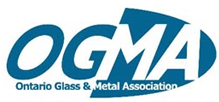New Standards for Building Guard Glass
by Frank Fulton
Originally published in Glass Canada Magazine, February 2017 Issue
Requirement and reaction
You probably remember all the kerfuffle brought on by mainstream media a few years ago over the epidemic of shattered glass falling from high rise buildings onto the heads of unsuspecting pedestrians. People were afraid to walk outside, Toronto politicians panicked and an emergency panel was assembled to find ways to combat this terrifying phenomenon.
The panel determined without a doubt that the culprits responsible for the spontaneous breakage were nickel sulphide (NiS) inclusions, microscopic impurities found in glass comprised of nickel and sulphur that shrink when glass is being tempered then expand unexpectedly in random situations later on causing the tempered lite to shatter. The panel made their recommendations and based on those the Ontario government issued a hasty edit to SB-13 that went into effect on July 1, 2012. At about the same time the Canadian Standards Association (CSA) was tasked with developing a national standard to be incorporated into the National Building Code of Canada (NBCC) and provincial codes.
The CSA just released the “A500-16 Building Guards” standard and compliance will soon be mandatory. This standard specifies requirements for the materials, design, construction, testing and performance of building guards that act as protective barriers to prevent accidental falls from one level to another, and includes walls that serve this purpose. Considering the public safety aspect of guards, it’s amazing that there hasn’t been a national code to govern them until now.
Similar to windows and curtainwall, guards must now be designed and tested to withstand the wind loads they will be subjected to, as well as strength, anchorage and fasteners, component spacing and deflection and impact. The type of glass that can be used as a guard infill is determined by the proximity of the plane of glass to the floor edge. Laminated glass can be used in all conditions. Heat soaked tempered glass can only be used when the glass is 50 millimeters or more inboard of the floor edge and monolithic tempered glass can only be used when the glass is 150 mm or more inboard of the floor edge. That may sound simple enough but when combined with the new impact-testing criteria that requires the glass to remain in place after being hit with a 100-pound bag of lead shot, laminated glass with a flexible interlayer may not pass muster in certain conditions or systems. Determining the right infill product for the job will be a much tougher prospect requiring pre-project engineering and a lot of up-front due diligence by all parties to a contract.
As head of the Façade Engineering Group of Exp Services and a member of the A500 standard technical committee, Greg Hildebrand has seen his share of issues with glass in guards and railings. He notes “the problem isn’t limited to spontaneous glass breakage but with the railing systems themselves,” hence the need for a standard that takes the entire system into account. “Glass is ‘walking’ out of glazing channels, die-cast shoes holding the posts are breaking and intact lites of glass have fallen out of railings to the ground after being subjected to the dynamic forces of the wind.”
Sergei Mihhailenko, president of Mihko Engineering, is not particularly happy with the new standard, arguing that many facets of the standard are already addressed in current building codes. He also considers that our engineering community is more that qualified to assess the strength of the materials that combine to make up a guard and that all of the testing specified in the new standard is unnecessary. Hildebrand counters that “Yes, it’s true that engineers can assess the strength of all of the materials. However, the guard assemblies can be quite complex and it is practically impossible for an engineer to assess how all of the components will work together when impacted.” Both engineers are in agreement that every guard installed should have a set of engineer reviewed and stamped shop drawings and that site inspections should be made mandatory across the country.
Frank Fulton is president of Fultech Fenestration Consulting. He has been in the industry for 30 years and can be reached via email at fultech.fc@gmail.com.

